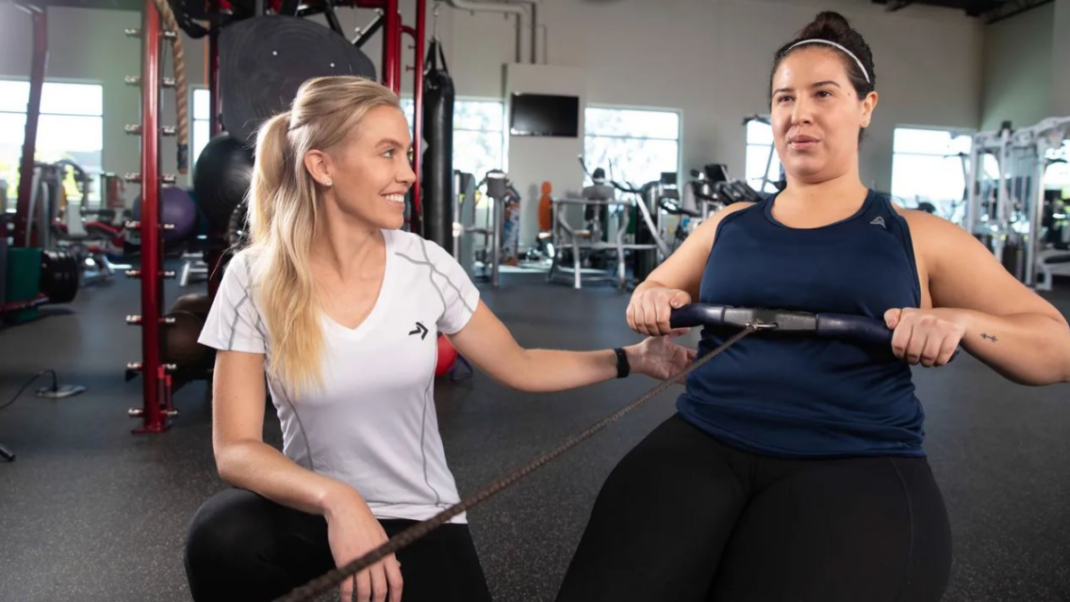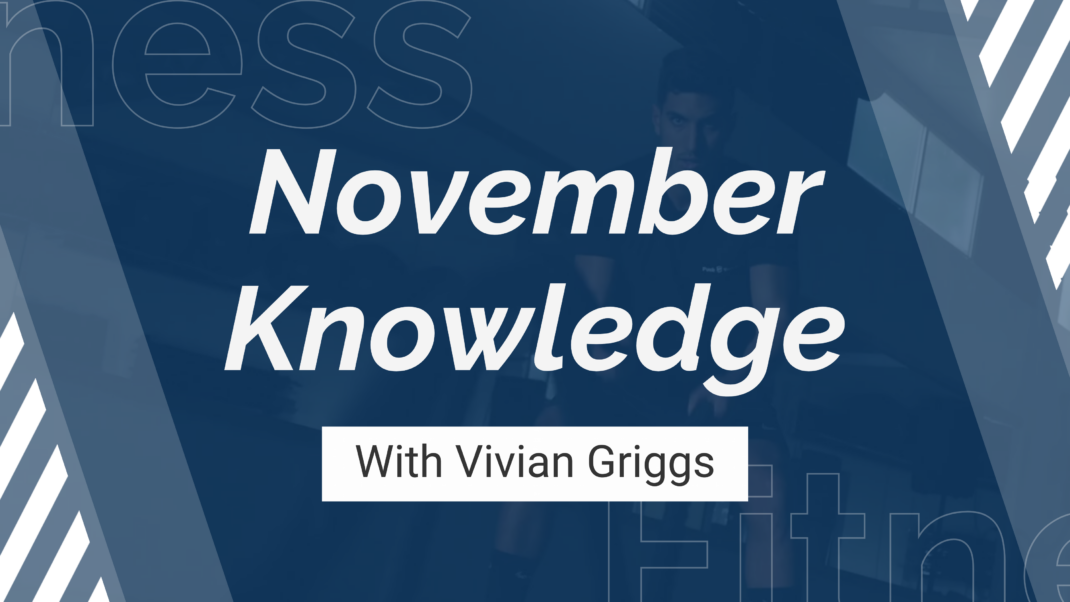Sample Class: Mindful Fusion Fitness
Add Pilates and yoga moves to a traditional fitness base to help participants train in a different way.

The popularity of yoga and Pilates has
spawned several fun and effective fusion offerings. This particular class,
“Mindful Fusion Fitness,” uses “traditional” fitness-based exercises as the
foundation and then layers on Pilates moves and yoga postures. This approach
allows instructors and participants to begin with familiar exercises and then
mindfully progress into moves that may be new or unfamiliar. The design trains
strength, balance and flexibility in a conscious manner. The beauty of this
class is that there are many ways to blend the exercises and layer on
repetition and rhythm changes to challenge participants. The variations are
endless, but the following sample will get you started.
Mindful Fusion Fitness Details
format:
body-mind group strength, balance and flexibility class
total time: 45–60
minutes
equipment needed: yoga
mats
music: energetic
instrumental music for Pilates and yoga is a great choice
Section 1: Introduction (3–5 minutes)
Borrowing an ideal from yoga, this
section sets an intention for class. You can either create a teaching focus or
educate participants about a training principle and carry the theme throughout.
For example, your teaching focus might be “breathing education.”
Sample Progressions:
- Teach how to breathe fully, with even
inhalations and exhalations. - Practice deep diaphragmatic breathing from
seated position. - Transition to child’s pose and “move the
breath” into back rib cage. - Practice feeling the flow of breath in the
body. From hands and knees, move through cat/cow (spinal flexion/extension),
linking breath with movement.
Section 2: Mindful Warm-Up (7–10 minutes)
In this set, you warm the body through a
progressive series of movements that encourage full range of motion and
emphasize the class theme. The warm-up takes the spine, pelvis, shoulders and
legs through a range of mobility exercises.
Sample Progressions:
- From kneeling position, transition to standing
by stepping feet up to front of mat; fold into supported forward bend. After a
few moments, stand up into mountain pose. - Stand with feet parallel and hip width apart.
Flow through rhythmical squats with arms reaching overhead as you stand and
down as you bend (8–16 reps). - Perform modified sun salutation. From mountain
pose, inhale as arms reach overhead; exhale as you bend into squat, bringing
hands to thighs. On an exhalation, tuck pelvis under and flex spine. Stay in
squat and inhale as you lengthen spine. Exhale and roll up to standing. Inhale
as arms reach overhead; exhale as arms come back to sides. Repeat 3–4 times. - Come back to mountain pose and do alternating
full arm circles as if you were doing the backstroke in swimming. Encourage
spinal rotation. Perform 8–16 repetitions each side. Transition into right-leg
lunge position to prepare for lunge series.
Section 3: Standing Integrated Fitness and Yoga Movements
(15–20 minutes)
As you flow from the warm-up into this
section, begin to place movements from fitness and yoga into fluid sequences to
challenge strength, balance and flexibility. Include a lunge series, a squat
series and a balance series.
Sample Progressions:
- Lunge Series. Begin
with stationary lunge on right leg. Use up-and-down 4-count rhythm as you do 8
repetitions with back leg bent. Transition to high lunge with back leg straight
(hold for 3–5 breaths) and then progress to warrior 1 (3–5 breaths). Open arms
and hips out into warrior 2 (3–5 breaths). Transition into plank pose and then
downward-facing dog. Repeat on opposite side. - Squat Series. Begin
with “traditional” squats (8–12 reps), then hold in chair pose for 3–5 breaths.
Transition into mountain pose to prepare for balance series. - Balance Series. From
mountain pose, lift one knee to single-leg balance. Hold for 30 seconds. Extend
leg out and in while maintaining good posture (4–6 reps). Move into tree pose;
hold for 30–60 seconds. Transition into plank pose and then downward-facing
dog. Repeat on opposite side.
Section 4: Floor Integrated Fitness, Yoga and Pilates (15–20
minutes)
From the floor, include movement
sequences in kneeling, prone, seated and supine positions. The movement series
includes spinal flexion, extension and twists.
Sample Progressions:
- Plank Series. Begin
with set of push-ups (8–12 reps). Hold plank position and perform Pilates
leg-pull front (4–6 reps each leg). Transition into prone position. - Prone Spinal Extension. From
prone position do set of back extensions (4–6 reps) followed by modified
Pilates swan move (upper-body extension, followed by lower-body extension;
repeat 3–5 times). Press back to child’s pose to recover. Transition into
downward-facing dog and then seated cross-legged position. - Seated Spinal Flexion.
Move into staff pose and then forward bend. Hold for 40–60 seconds. Do a series
of spinal stretches (3–4 reps) followed by Pilates roll-ups (3–5 reps). Then,
lying on the mat, do a set of abdominal curls (8–12 reps). Move into
alternating single-leg stretches (8–10 reps, total). Finish with roll-up to
seated position and transition to butterfly pose. - Seated Twists. From
butterfly come to staff pose. Bend one knee and place foot beside opposite knee
to move into seated spinal twist (hold for 3–5 breaths). Repeat on opposite
side. Move legs out to shoulder width and
perform Pilates saw exercise (3–5 reps each side). Roll back on mat and lie
supine.
Section 5: Stretch and Relaxation (5–10 minutes)
The final stage of class encourages
static flexibility and relaxation through a series of passive and active
stretches. This is an opportunity for participants to relax and calm the energy
flow in their bodies. Finish this section with corpse pose or progressive
relaxation techniques. Teach participants the importance of recovery.
Sample Progressions:
- Move into supine hamstring stretch (right leg)
with left leg extended. Roll up as if you were climbing the leg. On inhalation,
hold; on exhalation, roll back to mat and bring leg deeper into stretch. - From hamstring stretch, move leg to right side
for lateral stretch. - Bring leg back to center, bend it and go into
spinal twist by moving right knee across to left. Extend right arm to side and
look over right shoulder. - Repeat first three progressions on left side.
- Come to supine position. Completely relax and
spend 4–5 minutes in corpse pose. After relaxing, roll to right side and push
yourself up to seated position. Finish class with some full breaths and a
departing message of intention.
Helen Vanderburg was the 2005 IDEA Instructor
of the Year, the 1996 IDEA Program Director of the Year and the 2006 and 1996
Can-Fit-Pro Presenter of the Year. She is the owner of Heavens Fitness and
Fusion Fitness Training in Calgary, Alberta. Find out more at
www.helenvanderburg.com.
Helen Vanderburg
Helen Vanderburg is owner of The ACADEMY fitness studio and teacher training school, the author of Fusion Workouts, and the fitness education manager for Balanced Body®. She is the 2005 IDEA Fitness Instructor of the Year and 2001 Canadian National Fitness Leadership recipient. Vanderburg is an elite athlete as a world champion synchronized swimmer and a member of the Canada and International Sports Hall of Fames.






